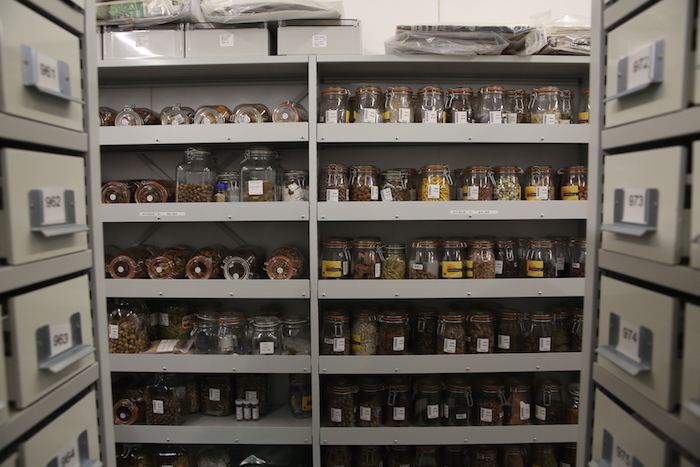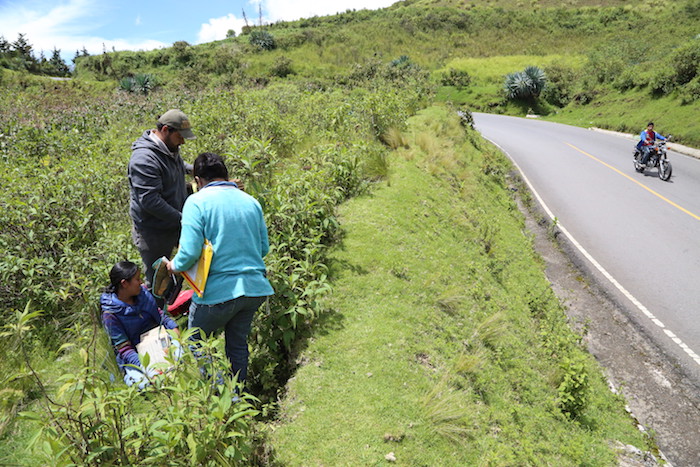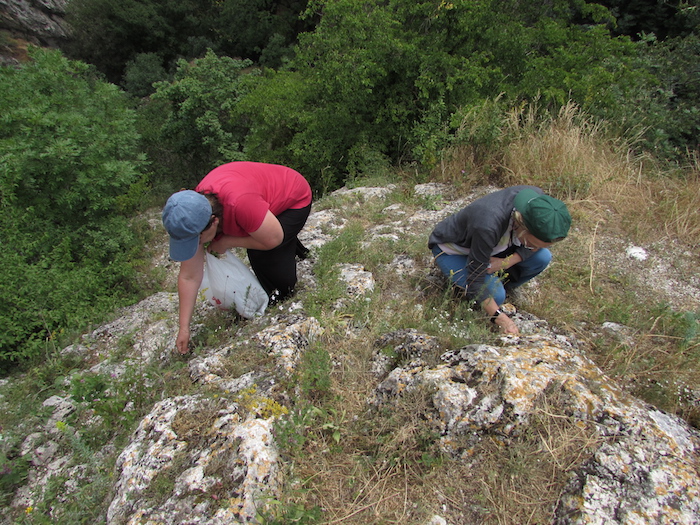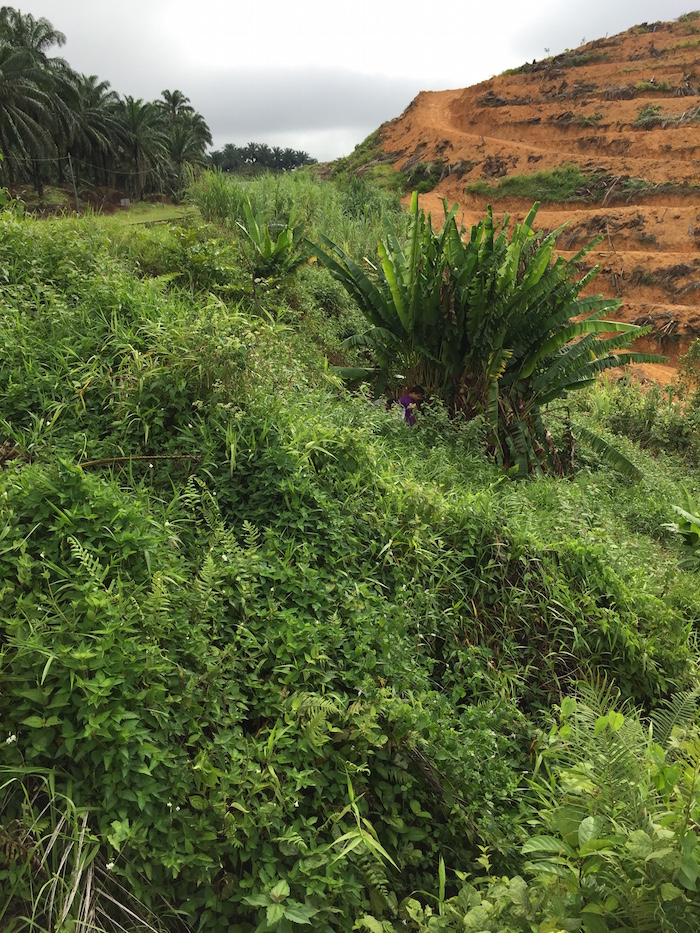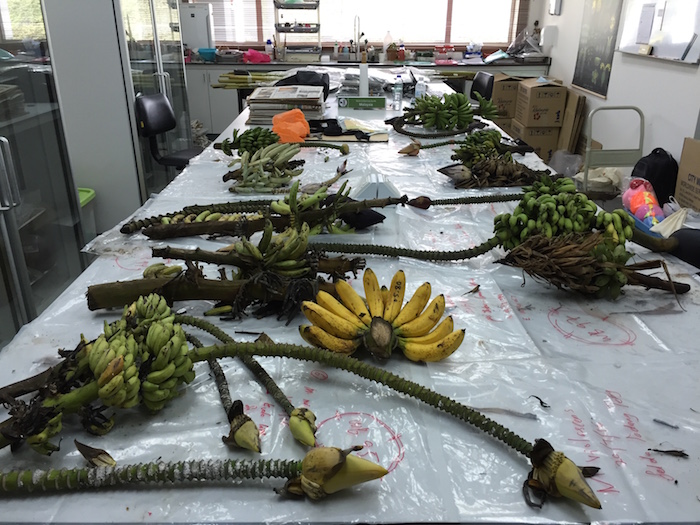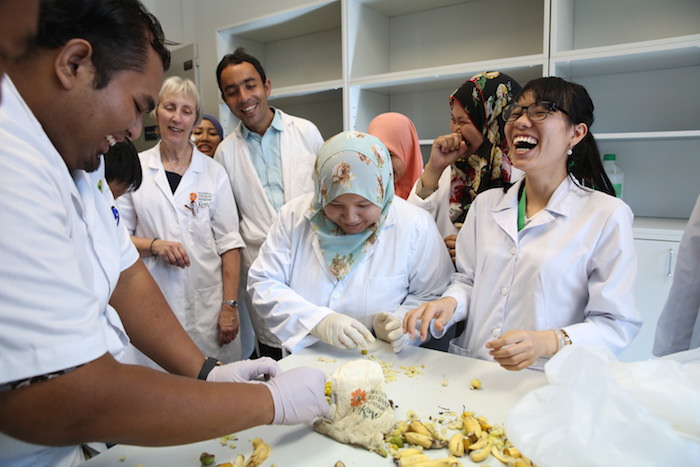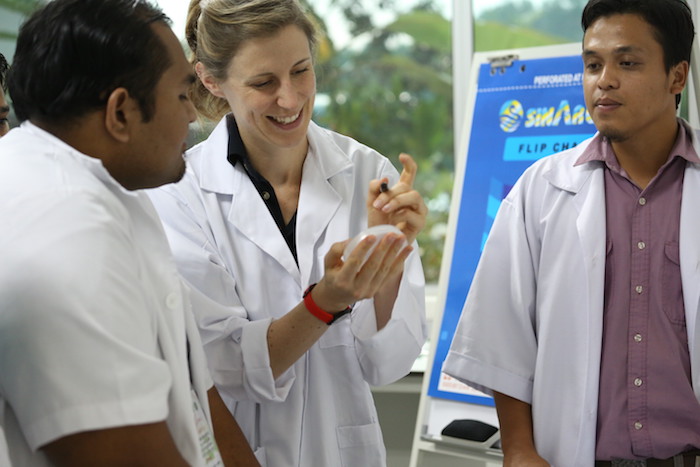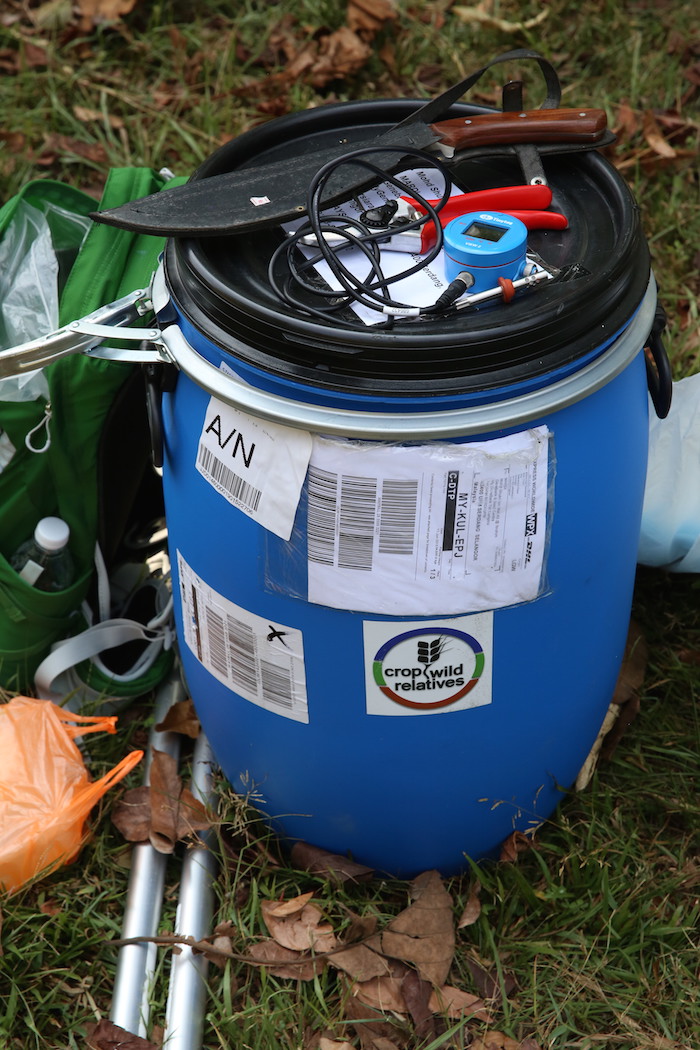Category : News
Published : March 16, 2017 - 3:22 PM
Written by Oriole Wagstaff, CWR Technical Officer
Looking back at the seed collecting accomplished during the sixth year of the CWR project, a global 10-year effort to collect, conserve and facilitate the use of crop wild relatives, the first thought that comes to our heads is to thank our 24 partners – old and new.
We invite you to join us – and them – as we take a look at some of the successes, challenges and surprises that have accompanied the project’s collecting progress over the past year.
New collections = newly available genetic diversity
2016 was a big year for the project, with the completion of collecting activities in Cyprus, Italy, Georgia and Vietnam. These partners not only completed collecting, but were successful in processing and securing all seeds in genebanks as well. We were also pleased to welcome new institutions throughout the year, with Costa Rica, Ecuador, Pakistan, Chile, Guatemala, Spain and Ethiopia joining as new project partners. These strategic collaborators will help to strengthen the global network of crop diversity, which will ensure we can continue to feed ourselves into the future.
As of December 2016, 14 countries (Armenia, Azerbaijan, Costa Rica, Cyprus, El Salvador, Georgia, Ghana, Italy, Lebanon, Malaysia, Nigeria, Portugal, Spain, Sudan and Vietnam) have sent 1,512 collections of crop wild relative seeds to be safeguarded in Kew’s Millennium Seed Bank (MSB), 33% of the target number of collections. A third of each collection stays in the partner’s own genebank, while the remaining seeds are stored in the MSB’s cold storage facilities at -20°C, some of it to be sent on to pre-breeders in due course.
Nearly 1,000 germination tests have revealed that the quality of the samples is high. High quality seeds mean the collections will remain viable for many years, and subsamples can be sent to breeders with no delay.
These collections represent 119 crop wild relative species, amounting to 4.7 million seeds. More than one million of these seeds were banked in 2016 alone, which included 22 species never before conserved in the MSB. This genetic diversity is filling gaps in genebanks around the world, and making vulnerable genetic material available to many countries that would not have access to it otherwise.
The challenge: finding target species
Collecting all these seeds has not been easy. Crop wild relatives often grow in hard to reach places, from the top of a mountain to the side of a busy road. Weather, topography, small populations and the fact that some species are tricky to identify only add to the challenge. Sometimes, the search for a single species can take months.
For our partners at the University of Pavia, Italy, finding their target species came down to a matter of luck, as they spotted the elusive wild sweet pea from the window of a train. For others, such as our partners at the Institute of Botany, Georgia, it took days of unwavering dedication.
The Georgian team had almost given up on finding Aegilops tauschii, commonly known as goatgrass, a wild relative of wheat, when their commitment paid off. With little information on the location of this crop wild relative, the search began to the south of the town of Dedoplistskaro, in an area that seemed to support suitable habitats. David Kikodze, Deputy Director at the Institute of Botany Ilia State University, Georgia recalls, ‘‘after two days of intensive field work, we failed to find a single specimen of the target species.’’ A third day was spent in the field, under the sweltering sun, this time to the north of Dedoplistskaro. The team kept coming up empty. On the fourth day, when they were nearly ready to give up, ‘’they decided, for some reason, to fight impatience and keep searching in the area,” said Kikodze. And they were rewarded when botanist Manana Khutsishvili found the elusive goatgrass at the foot of a medieval fortress of Khornabuji. ‘‘It is always very exciting to find the plant one is hunting for,” shared Kikodze, “This is not an easy job and it gives you a great satisfaction that many hours and days worked under burning sun were not fruitless.’’
For our partners in Malaysia, finding banana plants this past year has not only been difficult but also a race against time. Dr. Mohd Shukri bin Mat Ali, Deputy Director, at the Genebank and Seed Centre, Malaysian Agricultural Research and Development Institute (MARDI), explains: “Wild banana species are fast disappearing due to deforestation and rapid urbanization’.” The team at MARDI searched and were lucky to find wild bananas both in the heart of the jungle and by a roadside. But much of the wild banana habitat is threatened by expanding palm oil plantations. And not just in Malaysia.
In Vietnam, for example, where wild bananas used to grow abundantly on the edge of forests, our partners are finding less and less. Dr. Toan, Head of Research Planning and International Co-operation Department from the National Plant Resources Center (NPRC) explains: “Because of excessive harvesting and deforestation, now wild bananas can only be found deep in the jungle.”
Such threats caught the attention of journalist Virginia Gewin, who last year wrote about the importance of collecting this genetic diversity before it’s too late in her article, ‘Can the Banana be saved?’ Indeed, 2016 has highlighted the urgency of safeguarding genetic diversity for many partners. The clock truly is ticking.
To help locate the target species, the Royal Botanic Gardens, Kew, produced collecting guides for the project. These provide a description, images, phenology information, habitat and altitude range for all species each national partner has in its sights. The guides help prioritise when and where to plan collecting trips. Distribution maps are also provided, with information from the project’s gap analysis research, so that seed collectors can target populations not represented in existing seed banks.
As of December 2016, collecting guides have been completed for 24 countries. ‘’Each species covered by the guides has detailed identification notes and images’’ said Michael Way, Partnership coordinator at the Royal Botanic Gardens, Kew, ‘‘During the Chilean field trip, for example, we were able to use the valuable information in the guides to tell apart different species of barley wild relatives that we found in the mountains.’’
Lessons Learned
Despite the challenges, 2016 was a year of remarkable findings. Our partners in Spain found that, while many target species grow in habitats scarcely disturbed by human activities, others develop easily in areas of high human impact. For example, it is possible to find interesting populations of Vicia bithinica and Lathyrus hirsutus, wild relatives of vetch and grasspea, in empty plots in urban and industrial areas in Pamplona (Navarra). Other altered ecosystems, like roadsides and forest edges, also provide a suitable habitat for some target species. Such discoveries allow us to learn more about these species and add to the database of existing information.
Many of these findings are only possible with the help of local communities. ‘’Local people have an important role in conservation of plant genetic resources’’ explains Dr. Toan. The proximity of local communities to target populations has proved vital for understanding distribution, phenology, growing seasons, and the most appropriate collecting times. It even enabled the discovery of populations not indicated in other information sources. In Malaysia, the collecting activities of our partners at MARDI have attracted, and sometimes surprised, local communities, providing opportunities to both utilise local information and impart knowledge about the importance of conserving and utilizing crop wild relatives.
Capacity building is vital
Every challenge faced by the project offers an opportunity to exchange knowledge, improving our international capacity to conserve seeds. In 2016, visits were made to Azerbaijan, Armenia, Chile, Ethiopia, Ghana, Georgia, Kenya, Malaysia, Guatemala, Costa Rica, and Spain, to strengthen partnerships, exchange knowledge and better understand the reality of collecting seeds all over the world.
Not all organisations and partners have the same challenges and needs, and the project also provides courses targeting the specific needs of partners. Over the past year, the project has provided 73 people from 19 partner institutions with training, both in country and at the MSB, focusing on seed collection, processing and conservation techniques. These courses ensure that all partners have the knowledge and capacity to meet the project’s seed collection, processing and conservation standards, and are supported in doing so.
The project’s ‘Blue Drum Kits’ also fuel capacity building. These kits provide low-tech drying equipment for seed collection, processing and storage that can be the difference between life and death for collected seeds. The drums include collecting bags, information sheets, drying materials, storage and drying units, as well as field, cleaning and herbarium equipment. In 2016, we shipped them to 11 different countries (Armenia, Chile, Costa Rica, Ecuador, Ethiopia, Ghana, Guatemala, Nepal, Pakistan, Peru, and Sudan).
Looking ahead
Over the next two years, the project will continue to build the next generation of seed conservationists and researchers. Training courses are already planned for June and December 2017. We also expect our remaining 21 collecting partners to finish collecting over this period, ensuring the future of more than 350 crop wild relative species.
The seeds, once collected, will be safeguarded and entered into the Multilateral System, in which more than one hundred participating countries have committed to sharing the genetic resources of the world’s most important food crops for global food security. Here they will become available for research and pre-breeding for generations to come.
While this is a 10-year project, the impact of our partner’s efforts will be felt far into the future.
